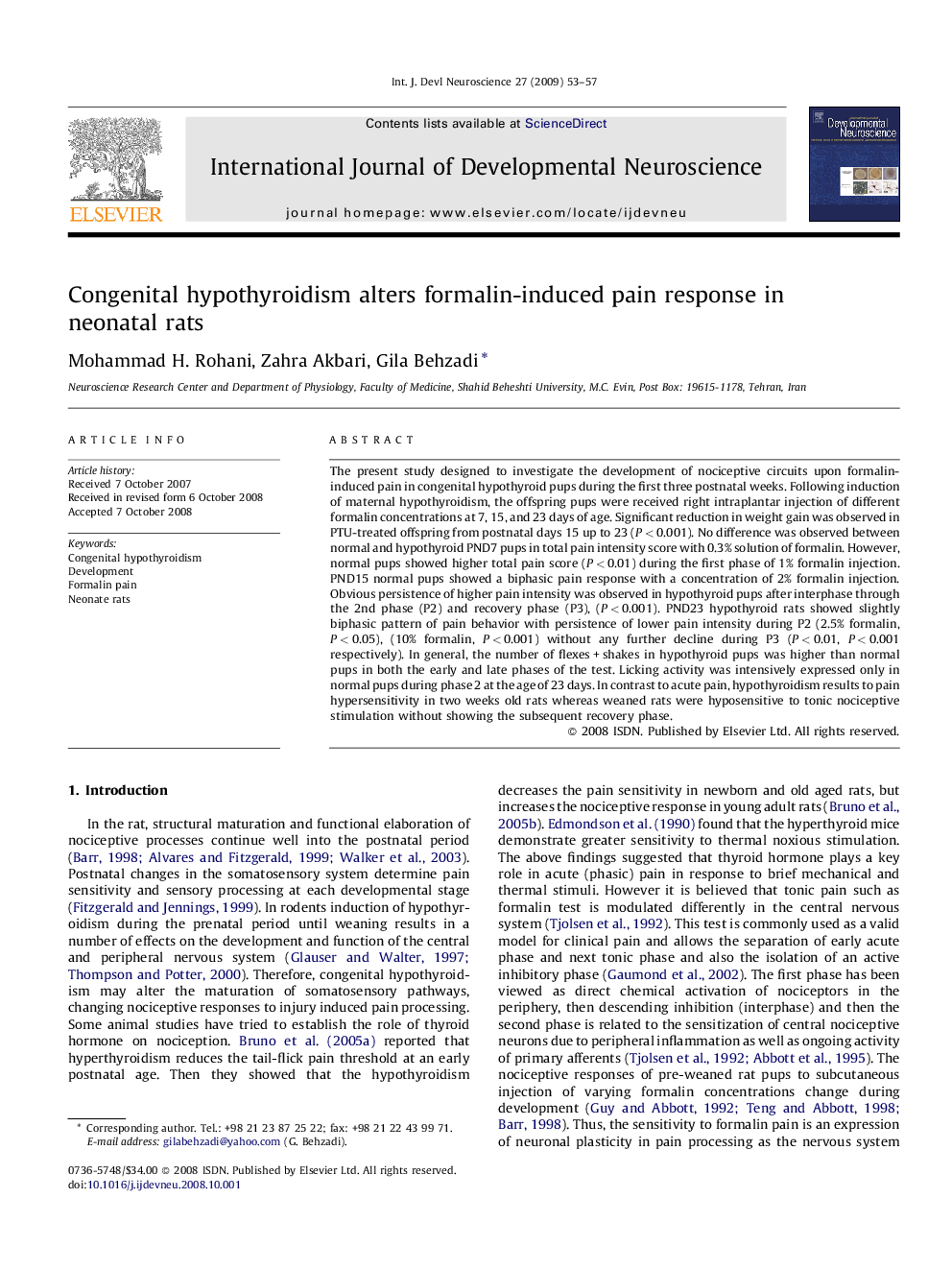| Article ID | Journal | Published Year | Pages | File Type |
|---|---|---|---|---|
| 2787011 | International Journal of Developmental Neuroscience | 2009 | 5 Pages |
The present study designed to investigate the development of nociceptive circuits upon formalin-induced pain in congenital hypothyroid pups during the first three postnatal weeks. Following induction of maternal hypothyroidism, the offspring pups were received right intraplantar injection of different formalin concentrations at 7, 15, and 23 days of age. Significant reduction in weight gain was observed in PTU-treated offspring from postnatal days 15 up to 23 (P < 0.001). No difference was observed between normal and hypothyroid PND7 pups in total pain intensity score with 0.3% solution of formalin. However, normal pups showed higher total pain score (P < 0.01) during the first phase of 1% formalin injection. PND15 normal pups showed a biphasic pain response with a concentration of 2% formalin injection. Obvious persistence of higher pain intensity was observed in hypothyroid pups after interphase through the 2nd phase (P2) and recovery phase (P3), (P < 0.001). PND23 hypothyroid rats showed slightly biphasic pattern of pain behavior with persistence of lower pain intensity during P2 (2.5% formalin, P < 0.05), (10% formalin, P < 0.001) without any further decline during P3 (P < 0.01, P < 0.001 respectively). In general, the number of flexes + shakes in hypothyroid pups was higher than normal pups in both the early and late phases of the test. Licking activity was intensively expressed only in normal pups during phase 2 at the age of 23 days. In contrast to acute pain, hypothyroidism results to pain hypersensitivity in two weeks old rats whereas weaned rats were hyposensitive to tonic nociceptive stimulation without showing the subsequent recovery phase.
